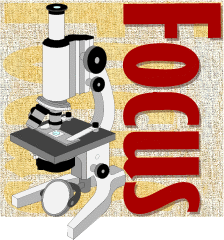Abbreviations
AED= Anti-epileptic drug
Chemistry
Topiramate is a white crystalline powder which is most soluble in alkaline solutions. It is freely soluble in acetone, chloroform, dimethylsulphoxide, and ethanol. The solubility of topiramate in water is 9.8mg/ml.
Topiramate is a sulphamate-substituted monosaccharide with a structure distinct from other AEDS. Its chemical formula is 2,3:4,5-di-O-(l-isopropylidene)-ß-D-fructopyranose sulphamate It is a derivative of the naturally-occurring monosaccharide D-fructose.
Dose Range
Faught et al (1996) conducted a randomized double-blind comparison of three doses of topiramate (200, 400, and 600 mg/day) and placebo as adjunctive therapy in patients with refractory partial onset epilepsy receiving one or two other anti-epileptics at therapeutic concentrations. 181 patients completed the 12-week baseline phase and were randomized to double-blind therapy. Median percent reductions from baseline in average monthly seizure rate, the principal efficacy evaluation, were 13% for placebo, 30% for topiramate 200 mg/day, 48% for topiramate 400 mg/day, and 45% for topiramate 600 mg/day. For the seizure rate comparison of active drug to placebo p values were: topiramate 200 mg/day, p = 0.051; topiramate 400 mg/day, p = 0.007; topiramate 600 mg/day, p < 0.001. Percent responders (equal to or greater than 50% reduction in seizure rates) were 18% for placebo, 27% for topiramate 200 mg/day, 47% for topiramate 400 mg/day (p = 0.013), and 46% for topiramate 600 mg/day (p = 0.027). A significant (p = 0.003) reduction in secondarily generalized seizures compared with placebo treatment was also documented with topiramate. Topiramate plasma concentrations were closely related to dosage, and there were no significant interactions between topiramate and other anti-epileptics. The minimal effective dose of topiramate in this study population was approximately 200 mg/day. Mild or moderate CNS symptoms were the primary treatment-emergent adverse events, but treatment-limiting adverse events occurred in only 9% of patients given topiramate compared with 7% given placebo.
Adverse Effects
The following adverse events are related to topiramate in 5% or more of patients: ataxia, impaired concentration , confusion, dizziness, fatigue, paraesthesia, somnolence and abnormal thinking . Topiramate may also cause agitation and emotional lability (which may manifest as abnormal behaviour) and depression. Less common adverse effects include amnesia, anorexia, aphasia, diplopia, nausea, nystagmus, speech disorder, alteration of the sense of taste, abnormal vision and weight loss.
Topiramate increases the risk of nephrolithiasis (formation of kidney stones) especially in people with a predisposition .
References
Faught E , Wilder BJ, Ramsay RE, et al (1996) Topiramate placebo-controlled dose-ranging trial in refractory partial epilepsy using 200-, 400-, and 600-mg daily dosages Neurology;46:1684-1690
 Focus on Topiramate
Focus on Topiramate